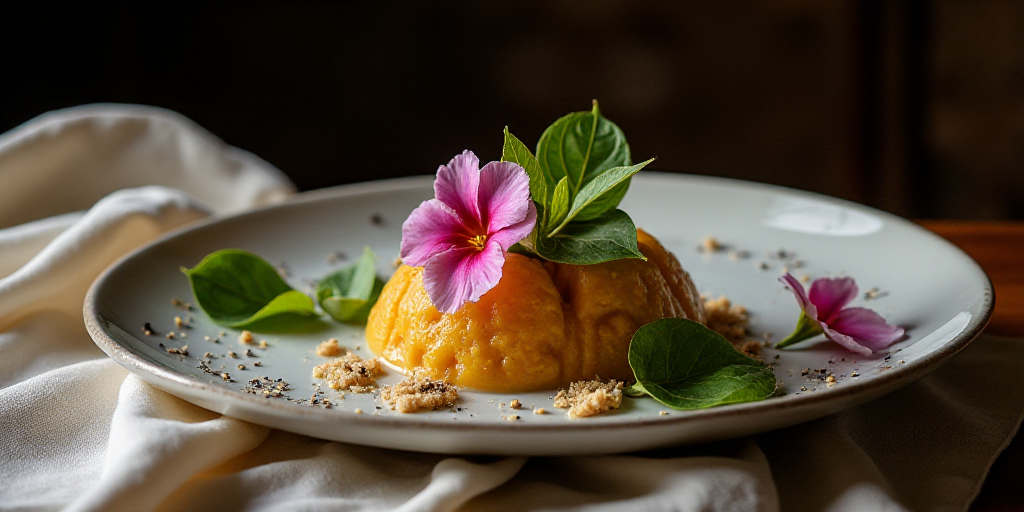The Rise of Italian Cuisine in Mexico City
Mexico City’s gastronomic scene has embraced Italian cuisine with passion, moving beyond mere appreciation to adopting and adapting various dishes and traditions. The proliferation of high-quality Italian restaurants, trattorias, and osterías in recent years reflects this growing demand for authenticity, unique ingredients, and artisanal products.
The competitive landscape has pushed diners to seek more character and less cliché in their dining experiences. In response, new establishments have focused on traceability, local producer relationships, and distinct identities. The Italian Chamber of Commerce in Mexico has recognized this trend by awarding the Ospitalità Italiana distinction to 24 restaurants, pizzerias, and gelaterias in 2025, acknowledging their commitment to authentic Italian culinary standards.
Piazza Pasticcio: A Unique Blend of Authenticity and Creativity
Amidst this backdrop, Piazza Pasticcio emerges as a unique concept that combines the desire for authenticity with technical skill and product vision. Located in Mexico City’s Juárez neighborhood, the restaurant, under chef Matteo Zega’s direction, offers a more complex, personal, and technically-driven culinary experience while preserving its original warmth and lightness.
Zega describes his cuisine as “refined but not pretentious,” with each dish meticulously crafted to evoke emotion without losing sight of its intended flavor profile. An exemplary dish is the Daily Crudo, where fish harmonizes with prosciutto’s umami, pesto’s freshness, and rose-infused vinegar’s depth.
This approach illustrates how Piazza Pasticcio blends modernity with roots, offering an honest reinterpretation of Italian cuisine infused with local identity rather than mere imitation.
Homemade Ingredients and Local Partnerships
What sets Piazza Pasticcio apart is not only its gastronomic ambition but also its artisanal commitment. Over 90% of the Italian products—pastas, cured meats, dairy—are homemade using locally-sourced ingredients selected with meticulous care. The philosophy is to cultivate the restaurant’s soul from its inception and utilize every ingredient to minimize waste.
The numbers reflect this ambition: 15 kg of fresh pasta and 50-60 kg of dry pasta are produced weekly to supply two to four weeks’ worth of orders. Pasta is the cornerstone, with 95% of tables ordering at least one pasta dish. The Cacio e Pepe is a star dish, accounting for around 20% of pasta sales. In the Alimentari store, pappardelle (fresh) and mafaldini (dry) stand out.
- Pastas: all’uovo and semola
- Cured meats and meats: spianata, lardo, salami, pancetta, guanciale
- Cheeses: sweet and salty ricotta, stracciatella, mozzarella, fresh cheese
- Bakery: focaccia, sourdough bread, taralli, grissini
- Sweets: amaretti, cantucci, fig and red fruit jams
- Beverages: limoncello
Instead of large-scale imports from Italy, Piazza Pasticcio prioritizes partnerships with Mexican producers who adhere to seasonality, traceability, and sustainability principles. Examples include Costa Pesca, Arca Tierra, and El Tomatero, the latter producing San Marzano-type tomatoes in Mexico.
This approach maintains authenticity without compromising local connections, fostering a gastronomic ecosystem that unites Italy and Mexico on the same plate.
A Creative Chef Backed by Institutional Recognition
The creative value behind Piazza Pasticcio’s proposal has a face: Matteo Zega, whose culinary training includes prestigious kitchens like The Fat Duck, Mirazur, Noma, and Quince. Zega brings a technical and emotional perspective that aims to transcend mere recipe translation, striving for an Italian cuisine with local character.
The restaurant’s ambition has been supported by institutional backing. The Italian government endorses Piazza Pasticcio as one of Mexico’s authentic Italian culinary proposals, aligning with mechanisms like Ospitalità Italiana to distinguish spaces meeting hospitality and authenticity standards.
This institutional seal, combined with a well-articulated culinary proposal, reinforces that the goal is not merely to name “Italian” but to embody it through ingredients, details, and techniques.
Clear Economic Data Supporting the Model
Piazza Pasticcio’s impact is also quantifiable: the restaurant serves 50-75 diners daily from Monday to Thursday and 100-150 on weekends, with an average check of 985 pesos per person.
Its clientele is predominantly national (85%), though the number of foreign diners (15%) is increasing. In its first year, low seasons were June, July, and August, while November to February represented the busiest months.






